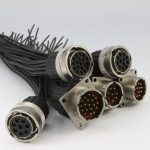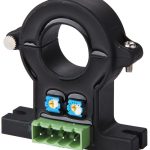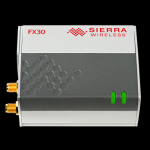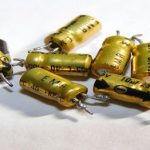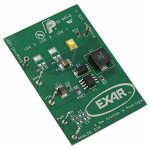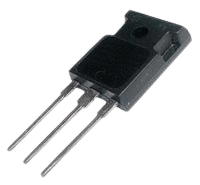
Introduction
Analog integrated circuits (ICs) are significant in modern electronics–enabling a wide range of applications–from amplification to signal processing. At the heart of many analog ICs lies the Metal-Oxide-Semiconductor Field-Effect Transistor (MOSFET). Understanding MOSFET basics is crucial for analogue integrated circuit design to achieve the desired performance and functionality of analogue circuits. This article uncovers the fundamentals of MOSFETs and their significance in analog circuitry.
What is a MOSFET? Exploring Its Significance
A MOSFET, short for Metal-Oxide-Semiconductor Field-Effect Transistor, is a type of field-effect transistor that serves as a fundamental building block for various analog and digital applications. MOSFET comprises three terminals: the source, drain, and gate. The applied voltage to the gate terminal leads to control of the current flow between both the drain and source terminals. MOSFETs integrated circuits designs are widely used for various analog and mixed-signal applications due to their excellent performance characteristics, including high input impedance, low power consumption, and compatibility with complementary metal-oxide-semiconductor (CMOS) technology.
Types of MOSFETs: Unlocking Their Critical Varieties
MOSFETs are classified into two main types that differ in the charge carriers they use for conduction. These types include:
- NMOS (N-channel MOSFET) – In an NMOS transistor, electrons are the charge carriers responsible for conduction. Upon applying a positive voltage to the gate terminal, it generates an electric field that attracts electrons from the source to the drain–allowing current to flow between the two terminals. NMOS transistors, commonly used in digital circuits.
- PMOS (P-channel MOSFET) – Unlike NMOS transistors, PMOS transistors use holes as the charge carriers. Successful application of a negative voltage to the gate terminal creates an electric field–attracting holes from the source to the drain, enabling current flow. PMOS transistors are also utilised in digital circuits but with complementary logic.
MOSFET Models: Square Law vs. Current Saturation
In analog Integrated circuit design, it’s common to use simplified models to represent MOSFET behaviour accurately. Two commonly used models include:
- Square Law Model: This model is often employed in the triode region of operation. It assumes that the drain current is proportional to the square of the gate-source voltage, making it helpful in designing amplifiers and linear circuits.
- Current Saturation Model: In the saturation region, the MOSFET is approximated as a current source. This model is particularly useful for designing digital logic gates, current mirrors, and active loads.
Understanding MOSFET Parameters
Several essential parameters characterise the behaviour of a MOSFET, including:
- Threshold Voltage (V<sub>T</sub>): The minimum gate-source voltage required to turn the MOSFET on and allow a small current to flow between the source and drain terminals.
- Transconductance (gm): This parameter quantifies how much the drain current changes concerning changes in the gate-source voltage. A higher GM indicates a more responsive MOSFET.
- Drain-Source Resistance (r<sub>ds</sub>): In the triode region, r<sub>ds</sub> represents the MOSFET’s resistance–affecting its amplification capabilities.
- Channel Length Modulation (λ): λ accounts for the shortening of the effective channel length as the drain-source voltage increases in the saturation region.
- Early Voltage (V<sub>A</sub>): V<sub>A</sub> is a parameter used in the Early effect model–accounting for the early voltage dependence of the MOSFET.
MOSFET Modes of Operation: Enhancement vs. Depletion
MOSFET modes of operations include:
Enhancement Mode
MOSFET is off when the gate-source voltage (Vgs) is below the threshold voltage (Vth) and turns on when Vgs exceeds Vth.
Depletion Mode
This MOSFET is on when Vgs is below Vth and turns off when Vgs exceeds Vth.
MOSFET Regions of Operation: Cutoff, Triode, and Saturation
- Cutoff Region: MOSFET is off, and no current flows between the source and drain.
- Triode (or linear) Region: MOSFET is partially on, and current flows between the source and drain.
- Saturation Region: MOSFET is fully on, and it operates as a low-resistance current source.
MOSFET Biasing: Fixed, Self-Biasing, and Cascode Biasing
Biasing is the process of setting the DC operating point of a MOSFET to ensure it operates within the desired region. Proper biasing is crucial for the stability and performance of analog circuits. Common biasing techniques include:
Fixed Biasing
Fixed biasing is a simple approach where a fixed voltage is applied to the gate terminal to set the MOSFET in the desired operating region.
Self-Biasing (Source Resistor Biasing)
Self-biasing uses a resistor connected between the source terminal and ground to establish a stable bias point. It offers improved stability compared to fixed biasing.
Cascode Biasing
Cascode biasing combines multiple MOSFETs to create a stable bias point with enhanced performance characteristics.
MOSFET as an Amplifier
One of the primary applications of MOSFETs in analog integrated circuit design is as amplifiers. MOSFETs can operate in the saturation region to provide gain to input signals. Common amplifier configurations include the common-source amplifier, common-gate amplifier, and common-drain amplifier. Each configuration has its unique characteristics and advantages, making them suitable for different scenarios.
Final Thoughts
MOSFETs, the cornerstone of analog integrated circuit design, provide the foundation for multiple applications. Understanding the basics of MOSFET operation, MOSFET circuits, different types, operating regions, and modelling techniques is essential for designing high-performance analogue circuits. With the proper knowledge and careful consideration of MOSFET parameters and biasing techniques, designers can create analog ICs that meet the demanding requirements of modern electronics. Whether working on audio amplifiers, voltage regulators, or sensor interfaces, a solid grasp of MOSFET fundamentals is indispensable in achieving successful analog integrated circuit designs.












